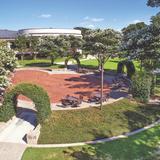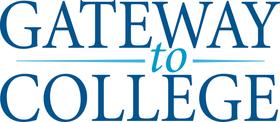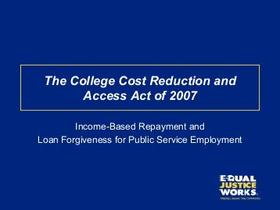- Temple College is a public community college, founded in 1926 through the joint efforts of civic, business, and educational leaders. The mission of Temple College is to serve the founders’ vision by meeting the needs of individual students, area communities, and businesses through quality educational programs and services that reflect our commitment to quality and integrity while preparing our diverse population as they enter an everchanging global society.
School Highlights
Temple College serves 6,209 students (36% of students are full-time).
The college's student-teacher ratio of 18:1 is lower than the state community college average of 23:1.
Minority enrollment is 59% of the student body (majority Hispanic), which is less than the state average of 74%.
Quick Facts (2025-26)
- Enrollment: 6,209 students
- In-state tuition: $3,744
- Out-state tuition: $5,664
- Student-teacher ratio: 18:1
- Minority enrollment: 59%
- Source: Integrated Postsecondary Education Data System (IPEDS)
Top Rankings
Temple College ranks among the top 20% of public schools in Texas for:
Category
Attribute
Diversity
School Overview
The teacher population of 348 teachers has stayed relatively flat over five years.
Temple College
(TX) Community College Avg.
Carnegie Classification
Associate's Colleges: Mixed Transfer/Career & Technical-High Traditional
Baccalaureate/Associate's Colleges: Associate's Dominant
Institution Level
Less than 2 yrs
At least 2 but less than 4 years
Institution Control
Public
Public
Colors
Black, Gold
Total Faculty
348 staff
262 staff
School Calendar
Student Body
The student population of Temple College has grown by 27% over five years.
The student-teacher ratio of 18:1 has increased from 14:1 over five years.
The Temple College diversity score of 0.70 is equal to the state average of 0.70. The school's diversity has grown by 7% over five years.
Total Enrollment
6,209 students
4,931 students
Student-Teacher Ratio
18:1
23:1
# Full-Time Students
2,259 students
909 students
# Part-Time Students
3,950 students
4,022 students
# Enrollment Undergraduate
620 students
403 students
# Full-Time Undergraduate Students
2,259 students
890 students
# Full-Time Graduate Students
n/a
40 students
# Part-Time Undergraduate Students
n/a
4,166 students
# Part-Time Graduate Students
n/a
47 students
Total Dormitory Capacity
n/a
252 students
% American Indian/Alaskan
n/a
n/a
% Asian
2%
6%
% Hispanic
32%
46%
% Black
15%
13%
% White
41%
26%
% Hawaiian
n/a
n/a
% Two or more races
6%
3%
% Non Resident races
n/a
2%
% Unknown races
3%
4%
Diversity Score
0.70
0.70
College Completion Rate (Students who graduate in less than 4 years)
18%
55%
College Completion Rate (Students who graduate in 4 years or more than 4 years)
n/a
34%
Average Graduate Earnings (10 Years)
$33,700
$34,600
Tuition and Acceptance Rate
The public in-state tuition of $3,744 is less than the state average of $3,764. The in-state tuition has declined by 17% over four years.
The public out-state tuition of $5,664 is less than the state average of $6,054. The out-state tuition has declined by 11% over four years.
In-State Tuition Fees
$3,744
$3,764
Out-State Tuition Fees
$5,664
$6,054
% Students Receiving Some Financial Aid
65%
84%
Median Debt for Graduates
$12,335
$10,765
Median Debt for Dropouts
$5,670
$5,500
Acceptance Rate
n/a
84%
Source: 2024 (or latest year available) Integrated Postsecondary Education Data System (IPEDS)
School Notes
- School Mascot: Leopard
- Temple Junior College was founded in 1926 in response to the need for a post secondary institution in Temple. The College is a result of the joint efforts of civic, business, and educational leaders. In 1996, the name of the College was changed to Temple College to refl ect its role as a comprehensive college, offering transfer programs, technical education, community education, career and workforce training, and cultural activities. From 1926 until January of 1957, the College was housed in the basement of Temple High School. As the student body grew, so did the need for a permanent campus, and the College moved to its present location in south Temple. The main campus now exceeds 105 acres, including 16 buildings. University Courtyard Apartments provide apartment-style on campus student housing and Temple College Apartments provide on-campus housing for low income student families. The Danny Scott Sports Complex includes a gymnasium with indoor swimming pool, fitness center and racquetball courts; baseball and softball fields, and an intramural field. The Old Nine Golf Course also is located on campus. Temple College also operates three off-campus centers. Temple College Taylor Center opened in the fall of 1997 and serves eastern Williamson County and surrounding area. The Cameron Education Center- Temple College opened in January 2000 to serve the educational and training needs of Milam County and surrounding area. Day and evening credit courses, technical and workforce training and continuing education classes are available at the center. Temple College has traditionally offered pre-professional courses leading to degrees in medicine, law, education, engineering, and similar fi elds as well as more general academic courses that enable students to transfer to fouryear colleges and universities for baccalaureate degrees. The technical program of the College expanded with the opening of the Watson Technical Center in 1967. In recent years a wide variety of credit and non-credit classes, programs and workshops have been offered through Community Education and Workforce Development and Corporate Training. Temple College became a leader in education for health professions with opening of a new Health Sciences Center and Clinical Simulation Center in 2004. Temple College is accredited by the Commission on Colleges of the Southern Association of Colleges and Schools to award Associate degrees. It is also recognized and approved by the Texas Higher Education Coordinating Board and the Association of Texas Colleges as a first-class two-year college. It is an active member of the Texas Community College Association, the Texas Association of Community Colleges, and the American Association of Community Colleges.
Frequently Asked Questions
How much does Temple College cost?
Temple College's tuition is approximately $3,744 for In-State students and $5,664 for Out-State students.
What is Temple College's ranking?
Temple College ranks among the top 20% of community college in Texas for: Diversity in US community colleges.
Recent Articles

Community College Success Rates 2025: Outcomes & Trends
Updated 2025 analysis of community college success rates, completion, transfer, costs, enrollment, and strategies that shape student outcomes.

Community Colleges in 2025: Combating Stereotypes with Impact
Updated insights on how community colleges are dispelling myths, growing enrollment, and expanding pathways in 2025.

2025 FAFSA Changes Explained for Community College Students
A comprehensive guide to 2025 FAFSA changes, what community college students must know, new eligibility rules, timelines, and tips to maximize federal aid.










